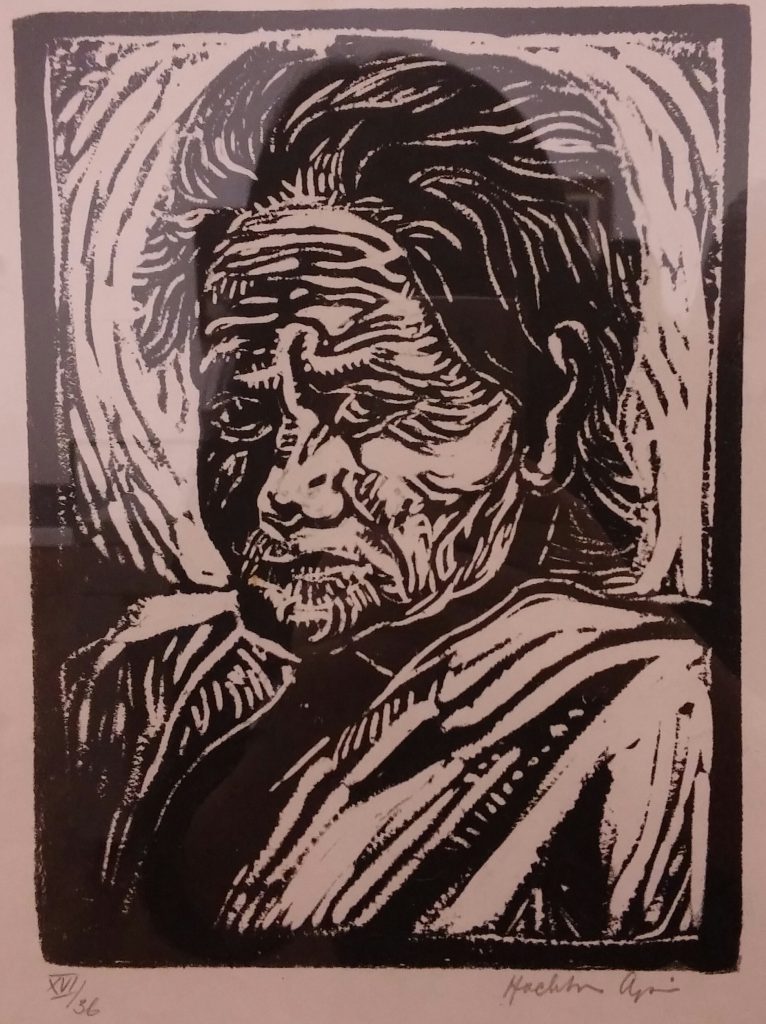Mochtar Apin – Old Woman
- 1946, Linocuts
Initial Response
It is a portrait of an old lady. She feels sad and her eyes reveal signs of reservation/ doubt.
There are a lot details shown in this lino cut. The wrinkles on the woman’s face gives off a feeling that she had went through a lot of hardship in her life.
Analysis
Lines are used to show texture and details such as her hair, wrinkles on her face and folds of her clothing. The shapes and scale of this art piece are simple and realistic. Details of the woman’s appearance look natural and lifelike.
There is a light source coming from the right. This can seen where shadows are formed on the left side of her face and body.
Lino cutting involves cutting tools with various blades to carve out shapes and marks of different size and thickness. For this lino cut, only black and white paints are used hence it is achromatic.
About the Author & Art Piece
Mochtar Apin was a pioneer of modern art and print medium in Indonesia. He was a painter, well known for model drawings and nude paintings. This lino print of an old lady is very different from his usual artwork.
This art piece is very special and meaningful because it is one of first few prints to be published in Indonesia and was made public to celebrate Indonesia’s first anniversary of independence from the Dutch colonial rule.


